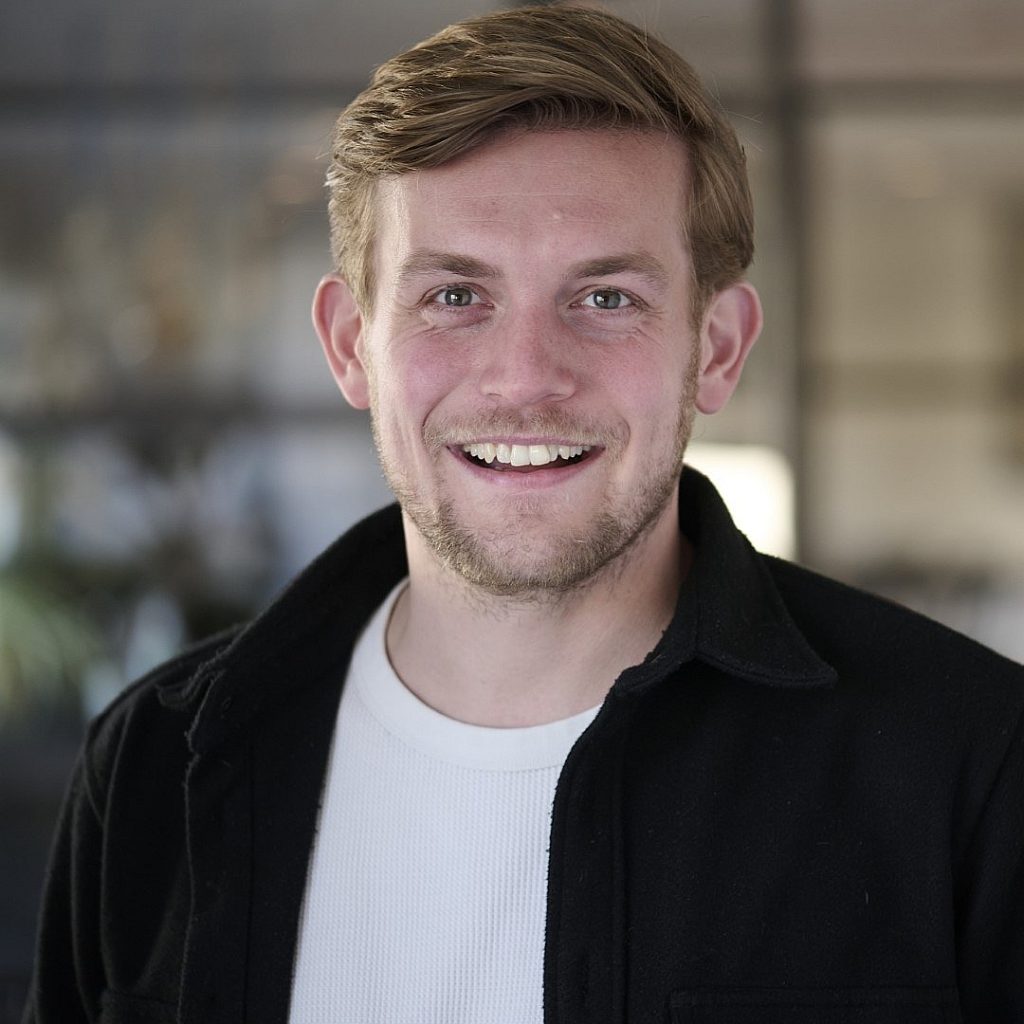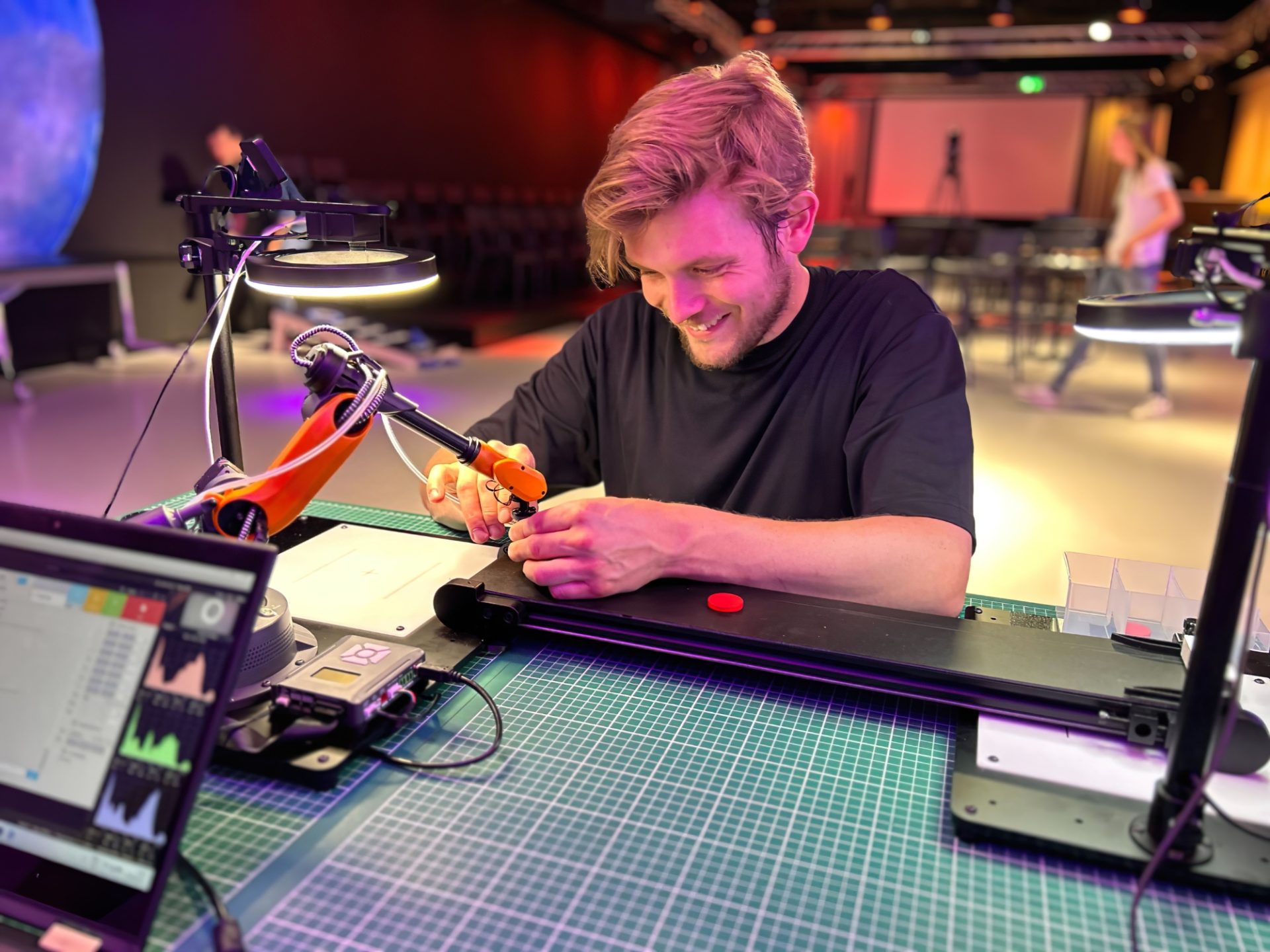Working life
Your title is Innovation Specialist. What does that role entail?
I’m a member of the Innovation Team of Lab271, which itself is the company’s innovation lab. When I began working here four years ago, we just made that name up for this role because my function had a lot of freedom. When I began the job, Lab271 had existed for just one year, so I started to really organize stuff to create a vision for our Innovation Team: how we look at innovation and the creative team principles. That was really important so that we could carry our vision out to customers, but also to our customer teams. One of our principles is we always say: “Yes, and…”. So colleagues know that if they come to Labs271, we will hear them out and we will try to make it work. That’s been quite refreshing within Schuberg Philis. I am also a member of the Consulting Circle, wherein we try to develop the company’s consulting capability; my specialty is within design thinking, service design, and innovation management.
What is a typical day like?
I don’t have a typical day, because I have so many different projects and diverse things I need to do. Above all, I’m kind of like a bumblebee. Within Schuberg, I have a big network in order to speak to different customer teams. Colleagues come to me when they have an idea or if they need help, with questions, such as: “How do I design a workshop?” or “I want to build a prototype, but where do I start?” Or I will initiate projects. For example, I recently started an initiative internally for generative AI; this is to check how we can make use of GitHub Copilot or Chat GPT within the company. What I do for a project like this is grab a bunch of people and then we just set a goal and work on it in a fast way to make necessary things available for our engineers. Another thing I do is a lot of pre-sales. Leads and prospects will get a tour through the lab. We do a lot of get-to-know and innovation workshops. We show the customer that we are not only a simple engineering hosting party, but that we can really translate business problems into IT engineering problems. And another thing I do is innovation projects. Customers come to us and say: “Hey, we have a problem, but we don’t know how to solve it. Can you help solve it with us?” For these types of questions, we have so-called concept sprints, for which I take the lead and serve as facilitator. In such a project I have two roles. Toward the customer, I’m a consultant on a strategic business level; and at the same time, I guide the project team through the innovation process, which means focusing on rapid prototyping, keeping the team together, and ensuring a good vibe. We build something within a week or two; it’s a really fast pace. That way the customer already has a prototype, business case, and other artifacts so they can convince their stakeholders that they need to do it.
Company culture
Getting to the business question behind the IT question is a priority for Schuberg Philis. How do you achieve that in your workshops?
You need to be a good listener. You need to know the situation of the customer: understand what they do, what their process is, what their problems are. Then you need to think: OK, they come to us with a certain question. How do I reach – within, for example, one, two, three, or four hours – that point? Then I think of exercises to get there and create the workshop. I always try to stay a bit more in the problem space in order to really understand what’s the real problem. Because sometimes there is a problem, but if you start digging into it when you have interviews with customers, the root cause lies somewhere different. Then you need to fix something else. As an analogy: sometimes the customer asks for a plane that can land on water. But then our engineers come and say: “I can build you an aircraft carrier, on which a plane can also land in the water along with 50 more planes.” But that response would be too much and too big, being the result of directly jumping to the solution.
How would you define innovation?
So one of the biggest challenges is when customers have the idea that they are innovating but they are only creating point solutions. That means really tiny things that will never be adopted within the whole company, so it’s a solution for one simple specific problem. Of course it is an innovative idea, but it is so niche that there is no real value behind it. We are always looking at what will bring the customer the biggest value. Which problem do we need to solve with an innovative idea in order to create real value? You always have to look in the core business process and check how to make that better. For example, in our Heineken case: for every percentage point that the brewery is more efficient, over the whole process they will earn 300 million euros more. Within a year we had 0.8 percentage. That’s the real value, I would say.
What’s next for the generative AI initiative you’re leading?
The goal is to do a pilot making open AI tools beneficial for our colleagues. For engineers, generative AI is very handy because it enables you to work way faster and actually do peer programming with an AI. But one of the biggest problem is that you’re sharing the data with several parties, which may be undesirable. And Schuberg Philis is very known for being secure and safe – we really look at the nitty gritty details. So our initiative is focused on assessing GitHub Copilot and Chat GPT to see how our colleagues can securely use them. In the meantime, we also have created an AI Manifesto. This consists of 10 principles to help Schuberg Philis use AI tools and output in meaningful, impactful, effective, and ethical ways. Our manifesto acknowledges that there’s still a lot to discover about the application of AI in business, but we can harness its potential by promoting an open, transparent culture that encourages experimentation while still always abiding by our company values. That means ensuring we have a clear business case when we use AI as well as making choices that positively impact people and the planet. That means aiming to achieve 100% customer satisfaction while also fulfilling our company’s ambition to make solutions that improve lives globally. In sum, when applying AI in our work, we want to make sure we tick off all the boxes specified in our manifesto, and that certainly means keeping us humans in the loop.
In your bumblebee-like position, do you enjoy flying in and out of different projects?
Yeah, because I really like to kickstart things and to accelerate. Whereas when it comes to optimizing stuff, I don’t really like that. My attention span is maybe too short for that. Because often I think: OK, I want to do something new. That’s why this company is a good fit for me. Within Schuberg Philis, you have a lot of freedom and responsibility. And when you touch it, you own it. In the end, I have an entrepreneurial mindset. In my role, I can start things: just do and just execute.
Passion project
Are you also given to kickstarting things in non-working life?
Well, yeah. What I do once a year is help create a gevelversiering – a façade decoration – of the Dutch Royal Family, which hangs at Cafe de Blaffende Vis in Amsterdam for the celebrations of King’s Day. I joined the initiative in 2013, when working as a bartender there. A decade later, I am still part of the façade committee, which consists of a group of 20 friends of the café. In March, we start brainstorming for a flattering but thought-provoking image of the Royal Family. Then myself and two other people play around in Photoshop. We have all the concepts, we work the first versions, and within a few weeks, have two or three concepts that we redesign and push further. Then we choose one to print, mount it on a plastic board, and hang it up on the façade. On the day after King’s Day, we are already back there tearing it down.
That sounds like a rapid prototyping process. What was this year’s iteration?
We created an image of the Dutch princess on a bike holding a university tote bag. Under it is the face of the singer Ramses Shaffy and the title of his song “Laat me,” meaning “Let me.” This is a reference to the fact that last year, Princess Amalia had to stop attending university in Amsterdam because of security threats against her. I was anxious that people would say: “Oh, this is not a nice image of her because you were putting on the façade a depiction of how she wants to be in Amsterdam and she can’t do that.” But as one of the café owners said in an interview with Amsterdam newspaper Het Parool, it’s a positive statement: just like everyone else, the princess has a right to a student life in Amsterdam. And it was really well received; we were on all the big entertainment shows and the news, the same as every year.
Curious to know more about how more colleagues spend their days? See the whole series here.

